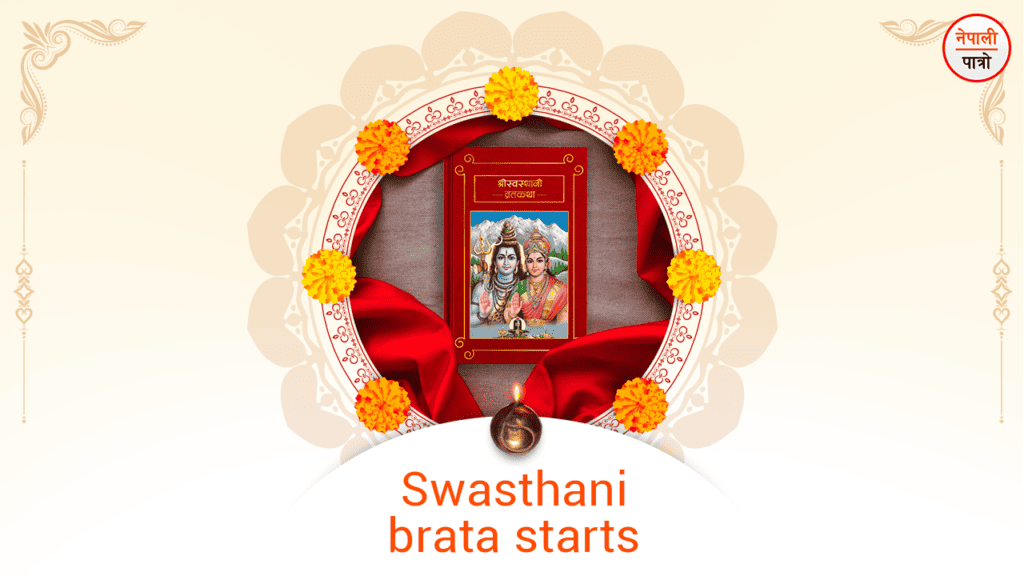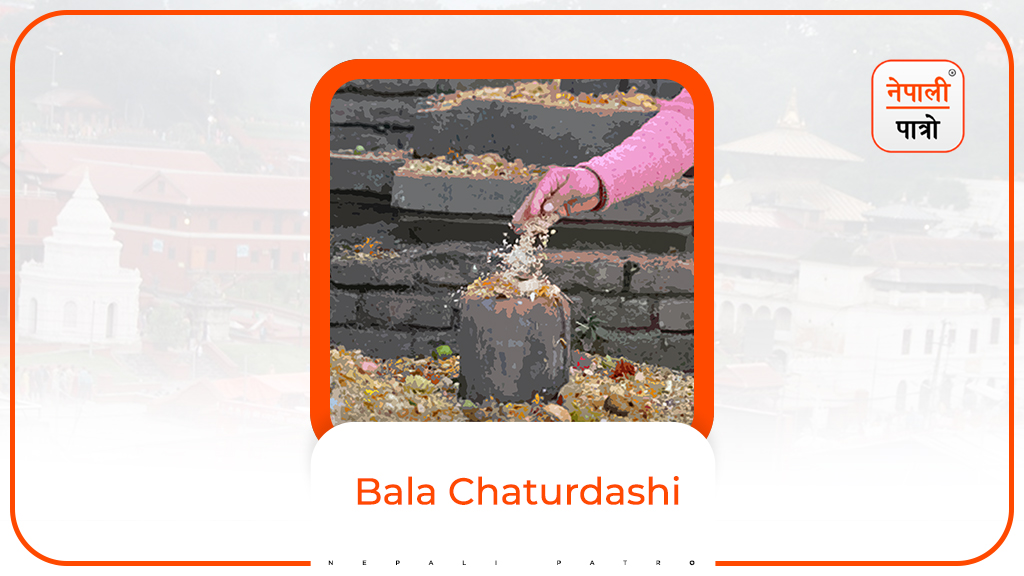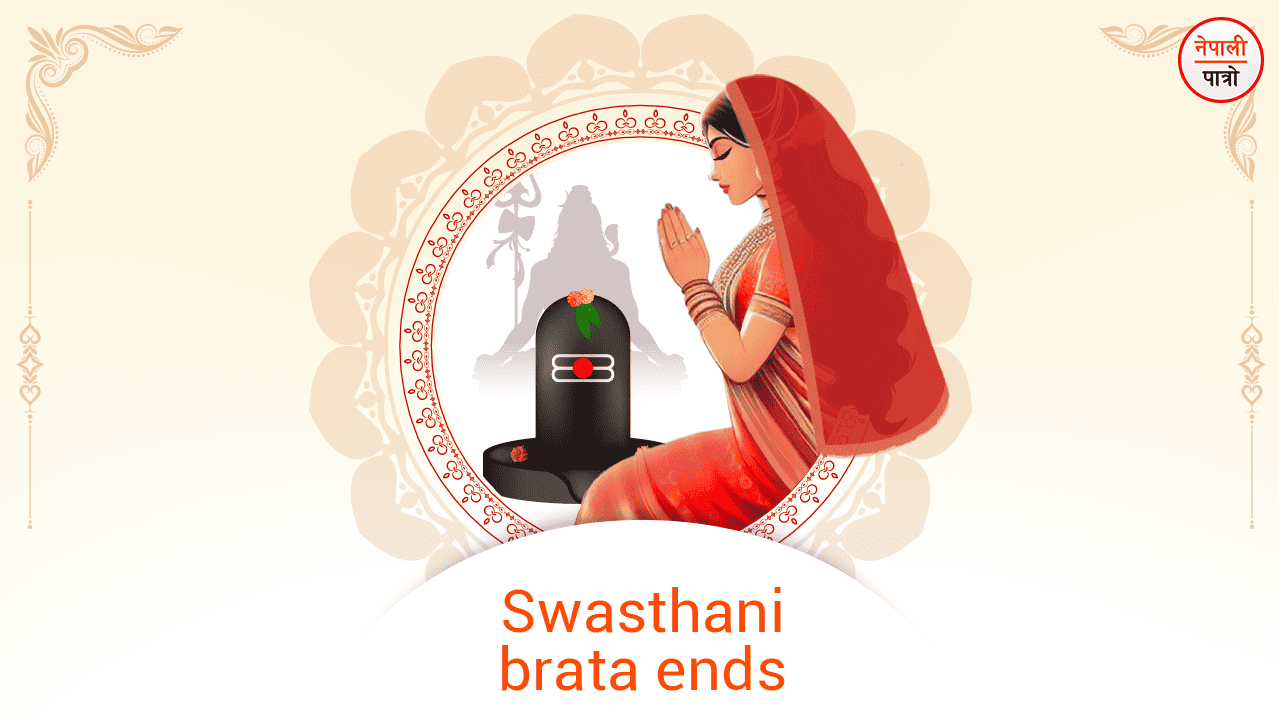
Shree Swasthani Brat
Shree Swasthani Brat (fast) is the fasting that Nepali women scattered in Nepal and elsewhere observe strictly from Paush Shukla Purnima and conclude it on Magh Shukla Purnima. According to the mythological context, Nepal is considered as the playground of Bhagwati Parbati (Goddess Parbati/Parvati) daughter of the Himalaya and she is worshiped for a month in the name of Swasthani Devi in Nepal. Shree Swasthani fast is the difficult vow made by Goddess Parbati/Parvati, a devotee of Lord Shiva, to receive Lord Shiva as a bridegroom from her childhood. In this (Brat) Fast, Lord Shiva, who lives with Parvati, is also worshiped.
Shree Swasthani Fast Story
In the Satya Yuga (Golden Age, according to Sanatan dharma, i.e Hinduism), as mentioned in the Purans, according to the advice of Lord Bishnu, Parvati, the daughter of the Himalaya, fasted in Shree Swasthani Brat to get Mahadev (Lord Shiva) as her husband and it is also mentioned that fasting during this occasion fulfills one’s wishes. Parbati wanted to be Mahadev’s wife from an early age. When Parbati was mature enough for marriage, her father Himalaya started preparing to give her in marriage to Lord Bishnu. After knowing this, Parvati ran away and went to the remote forest, started meditating on Mahadev, and began to do severe penance. Ashutosh Mahadev was pleased with this and after approval from Lord Bishnu, he suggested him to find an idea so that Parbati can get Mahadev himself as her husband. After Bishnu advised Parbati to Fast, observe Shree Swasthani Brat following strict methods so that she can get Mahadev as her husband, Parbati duly fasted to Swasthani for a month and the effect of the same fast she got Mahadev as her husband.
As there is a religious belief that the marriage of Shiva and Parvati took place due to the effect of the fast observed by Mother Parvati, there is a belief that by fasting, one will get the bridegroom as per one’s wish. It is believed that the effect of this vow, especially for women only, is to attain happiness, peace, prosperity, and fame. This holy fast that united Shiva and Parbati is also discussed in the Puranic texts, so traditionally the same topic is recited in the Brata-katha (Shree Swasthani Fast Story).
In another context of the Shree Swasthani Brat story, it is mentioned about Goma Brahmani, who was married to 70-year-old Shiva Sharma Brahmin at the age of seven, her tragic story and her fasting according to the rites taught by Sapta-Rishi her son Navraj became the king of the Kingdom of Labanya, plus there is another story of Chandravati’s arrogance, ego and her rejection of Sriswasthani Parmeshwari (Goddess), because of which she suffered as being unconscious for years by the side of the river Shali (Shali Nadi), is also described in the Swasthani Bratakatha.
The Sali river and the Sleshmantak forest mentioned in the story of Shree Swasthani Mata are in Kathmandu, in our country Nepal. It is mentioned in the Skanda Puran that all the incidents and events mentioned in this story actually happened inside the vicinity of Nepal. Swasthani is the goddess of her own place. Nepal is also the playground of Parbati, the daughter of the Himalaya. That is why Mother/Goddess Parbati herself is actually known as Shree-Swasthani Parmeshwari. Devotees flock to Pashupatinath, Sleshmantak Ban (Sleshmantak Forest), where Shiva-Parvati used to play in various forms, as well as Bankali, Bagmati river, Mrigasthali, Kirateshwar Mahadev Temple, Gaurighat, Gujyeshwari, and various other Shakti Peeths (power centers), including places where Sati Devi’s organs fell down and Mahadev temples, sacred Shali river, etc. for the whole month. In those places, Swasthani Mela (Fair) is held during the whole fasting period for a month.
One of the fasts performed by women in Nepal with great devotion and faith is the fast of Shree Swasthani Mata. In order to observe and take the fast of Shree-Swasthani, on the day of Poush Shukla Chaturdashi, one should cut the nails of the hands and feet, take a bath, put on clean clothes, and prepare the fast by properly cleaning the house and the yard. Brati (the person fasting) should consume fruits only once a day, sleep on the floor above Radi-Pakhi (hand-knit woolen carpet/quilt), or a clean bed throughout the month. On the day of Poush Shukla Purnima, after bathing in the morning and finishing daily activities, one should purify oneself and sit in a pure posture. Then the Brati, to start the fasting, should make a resolution from the heart as follows “From today till the full moon of Magh Shukla, as per the method of Fasting, I will spend every noon with the ritual/ offering of Shree-Swasthani Parmeshwari, and every day at night by listening to the Swasthani story, I will conclude my fast of one month” and the Brati should start the fasting.
Thus, after starting the Shree-Swasthani fast, there is a law that one has to bathe every day early in the morning, wear clean clothes and worship Shiva Parbati at noon. For a month, one should eat only one meal of sattvic food (fruits, dry fruits), worship Lord Shiva with Goddess Shree Swasthani, and follow the strict rules of fasting. Since Parbati used to worship the Shiva-linga made out of the sand during her childhood, it is customary to worship the sand Shiva-linga while fasting during the Shree-Swasthani brat. Worshipping should be done by placing a copper plate inscribed with Asta Dal above a Tapari (multipurpose leaf plates and bowls made by stitching Saal leaf of Saal trees, “Shorea Robusta” with small thin-small bamboo sticks) filled with rice placing it near the Shivalinga. The ornaments of Shree Swasthani Mata should be placed on that plate and a beautiful idol with ornaments should be set up and worshiped along with Bhagwati’s prasad (offering of sweets, fruits, etc) and Mahadev by offering Panchamrit, sandalwood, incense, lamps, clothes, betel nut, vermilion, saubhagya dravya (various items used by Hindu married women, red in color), Sel-roti, (Deep fried round bread), haluwa (rice or wheat flour fried and prepared like a pudding), etc. After the puja, one should meditate on the following mantra of Shree Swasthani Mata with flowers in hand:
सुवर्ण–वर्ण–दीप्ताभां त्रिनेत्रां कमलाननाम् ।
सिंहासन–समासीनां सर्वालंकार–भूषिताम् ।।
नीलोत्पल–धरां वामे, दक्षिणे वरदां शुभाम् ।
खड्ग–चर्मधरां चोर्ध्वं वामदक्षिणयोः क्रमात् ।।
चतुर्भुजां च मां वाऽपि पूजयेत् वृषकेतुनम् ।
एवं ध्यात्वा महादेवीं स्वस्थानीं जगदीश्वरीम् ।।
That is to say, “I pay attention and meditate to Shree Swasthani goddess who has a divine color like gold, has three eyes, with a happy face like a lotus flower, sits on a throne adorned with various ornaments, holds a sword, feather and sapphire lotus, having four arms”.
At noon one should worship Shree Swasthani Mata along with Lord Shree Mahadev. After the puja (worship), one should give argha (obeisance) to the goddess Shree Swasthani so that one’s wish may be fulfilled. After the evening worship, the story of Shree Swasthani Mata should be recited. There is a tradition of listening to the story of Swasthani Brat, a dialogue between Kumar and Agastya Muni of Magh Mahatmya under the Kedar section of Skanda Puran. Aarti should be performed after listening to the story.
After performing daily pujas in this order, the story called Nitya on the day of Magh Shukla Purnima is ended by writing “Aum-kar” on a copper plate for a special puja. One should put a sand Shiva-linga in the center of the plate and also install the Shree Swasthani goddesses figure and make the offering with 108 pieces of Pan (kind of sweet wrapped in betel leaves containing areca nut, lime, cinnamon, etc), 108 pc of Janai (sacred thread worn by Brahmins as well as some other following Hinduism) 108 Akchyata (Rice), 108 Oil lamps, 108 offerings, barley, sesame, etc., all items to be offered must contain 108 pieces. Other fruits and offerings can be offered as much as possible. After the puja, one should circumambulate or perform the prostration of the plate and offerings 108 times.
After concluding the fasting, by reciting “O Swasthani Mata, by the grace of Yours, I have completed my fast” and give Argha. After this all the offering made to the Shree Swasthani mata, from 108 pieces of various items, one should take out 8 pieces of each item and give it as Prasad to one’s husband if there is no husband to one’s own son, if there are no sons then to son of one’s best friend or if none of them exists then they should be placed in the flowing river water with the wish that all incomplete works, etc be fulfilled. It is also mentioned in the method of fasting of Shree Swastani Mata that after this the remaining fruits and other items should be eaten during the concluding night and stay awake the whole night. There is a popular belief that after doing so many deeds (Karma), and by consuming the items from the offerings made to Shree- Swasthani Mata by the brati and family, the result of Shree Swasthani Brat-katha will eliminate all the sorrows and fulfill all desires plus wishes of the devotee and her family.
During the period of Swasthani Brat, a fair is held for those who visit to pay homage to Madhav Narayan after bathing in the River Shali (Shali-Nadi) in Sankhu, Kathmandu. Millions of devotees come here every year as there is a religious belief that if one comes here in the month of Magh to bathe and worship Madhav Narayan, all sins will be destroyed and one will attain virtue.
Click on this link to listen to Shree Swasthani Brat Katha, and to read other religious blogs please do visti Nepali Patro.


February 2, 2023 3 years
9819883354
December 21, 2024 12 months
Good job,
Nepalis Patro I’m very happy every thing is there what’s I want to see
about Tithi Events.